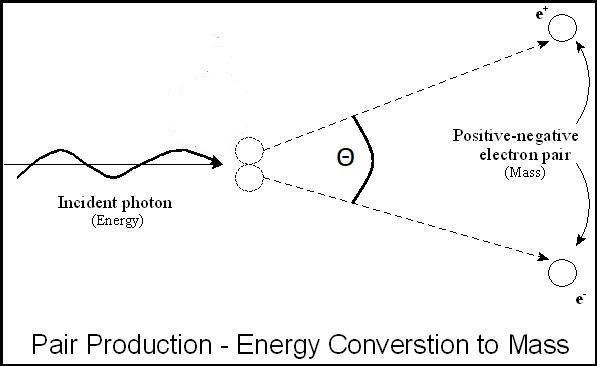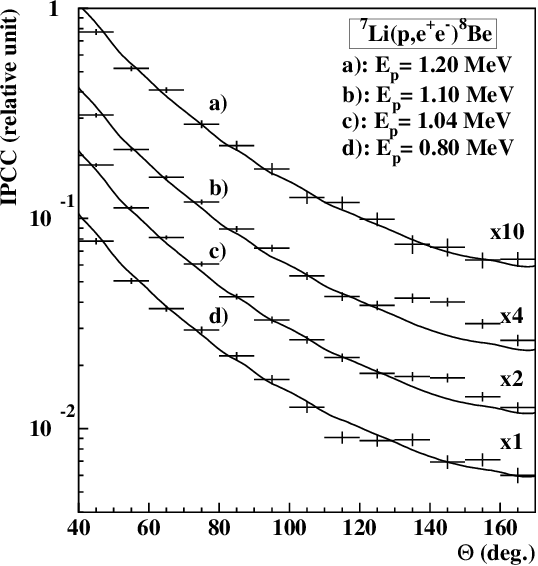Nearly 400 years ago, as the legend goes, Sir Isaac Newton was sitting under a tree when an apple fell on his head. This gave him the idea that the laws of nature “up there” keeping the planets around the sun, must be the same laws “down here” keeping his feet on the ground. Newton realized that there is a cohesive framework of laws that works in seemingly disparate sections of our world. This cohesive framework begs the question: is there a single set of laws that works in every corner of the universe?
Science has come a long way since Newton. We now have a theory of the most fundamental constituents of matter, which are called Elementary Particles. This theory, called the Standard Model, describes the properties of these particles and how they interact with one another. The theory is rather complicated, but given that we are attempting to describe the universe, it is quite modest. Or as Nobel winning physicist Steven Weinberg put it, “The Standard Model is so complex it would be hard to put it on a T-shirt – though not impossible; you’d just have to write kind of small.”
The standard model describes 3 of the fundamental forces of nature: electromagnetism which powers your phone; the strong force which holds the nucleus of the atom together; and the weak force which is responsible for the radioactive decay of elements such as Uranium. This Standard Model, together with the gravitational force, that is not yet fully integrated into the framework, make up the 4 known forces of our reality. These forces describe how opposite charges attract, how a cannonball flies through the air, or how a nuclear power plant works. Unfortunately however, or fortunately for physicists looking for something to explain, we can not understand every experiment we conduct.
Over the past few years, a pair of experiments done by a team in Hungary, suggest that we may have been trying to solve the puzzle of the universe without some essential pieces. A team of theorists centered at UC Irvine have suggested that these experimental results provide evidence for a fundamental particle that we’ve never seen. If this particle turns out to be real, it will have far reaching effects on our deepest understanding of physics.
The Beryllium Experiment
In 2016, a team in Hungary, led by Attila Krasznahorkay, decided to look at rare decays of Beryllium (Be) atoms. One way Be can decay is by emitting a photon of sufficient energy. The team in Hungary then looked to see what happened to this photon. A photon carries energy, and by Einstein’s famous formula, E=mc^2, mass is also a form of energy. In this experiment, the high energy photon converts its energy to mass by creating a pair of fundamental particles: an electron-positron pair (E-P). The team then measured the energy of this pair, as well as the so-called “opening angle” Θ (read “theta”) between the two. This opening angle is where the magic (read “science”) happens.

Now let’s look at the data the Hungarians recorded. In the figure, the y-axis is the number of E-P pairs counted and the x-axis is the opening angle Θ they were counted at. Now, just as you are more excited after drinking a cup of coffee than you are rolling out of bed, the Be atom can also be excited to different degrees; the 4 lines labeled a,b,c,d are different degrees of excitation, with ‘a’ being the most excited and ‘d’ the least. The solid lines with each letter are our current theory’s prediction, and the crosses are what the experiment actually recorded.
Beryllium Data

The team in Hungary found a disagreement with the standard model at an opening angle of ≈140°; they detected more E-P pairs at this angle, than our current theories can possibly predict. We call this a “bump” in the data and you can see it clearly in trial ‘b’ in the Beryllium data.
The team had to double check themselves. They looked at the nuclear physics of Be for other rare decay processes that might be fooling them, they looked for systematic errors in their apparatus that might be giving a false positive and a host of other verifications they discuss in their paper. They report that the likelihood that this was some random background fluctuation was 0.000000000056%. All signs tell that this signal was truly detected, but what does it mean?
The Theory
As most particle physicists will tell you, when faced with a vexing experiment, one should propose a new particle that can explain the results. This might sound strange or perhaps forced, but this process has a long and fruitful history; we’ve seen that these particle propositions have the potential to make precise predictions. Enter the main character of our story: the X17.

|
Left: The experimental setup that Krasznahorkay et. al used in Hungary for their pair of experiments. Source: phys.org Right: A scientist standing in the Large Hadron Collider, the highest energy particle accelerator on Earth. Source: nationalgeographic.com |
Professors Jonathan Feng and Tim Tait, and their colleagues at UCI, looked at this unusual data and proposed that these results are best explained by proposing a never before seen particle, the X17. The “X” meaning unknown, and the 17 referring to the predicted weight of the particle.
Proposing a new particle is not as easy as it sounds. We’ve done a lot of experiments over the years, and any one of these could have detected the X17. So if it exists, it must have certain properties that have evaded us so far. In their paper, Feng et. al go down the list of relevant experiments, each one helping them narrow down what this particle must look like. There are many properties they propose, but one stands out in particular which made shockwaves in the physics community: the X17 must be of a certain category of particles, called gauge bosons.
Now a “gauge boson” might sound as good as gibberish. Nevertheless, physicists have determined that the forces of the universe are all mediated by this type of elementary particle; this means the X17 would suggest a new force of nature, a completely unnoticed way for particles to interact. This has the potential of solving some great problems. Dark matter, for example, is the mysterious matter that permeates the universe which only interacts through gravity; it doesn’t interact with light (hence “dark”), we don’t know what it is, but we do know there is a lot of it in every galaxy. However, it is possible this new force mediates a “portal interaction” connecting regular matter and dark matter; giving us a new way of understanding the unknown substance.
So far though, we have a peculiar experiment tied with an immensely exciting resolution to it. But it is just one experiment, and as Carl Sagan famously said, “extraordinary claims require extraordinary evidence”. After Feng’s paper, physicists were excited but far from convinced. In a few short years, a follow-up experiment was pursued.
The Helium Experiment
If the X17 were to exist, with the properties that Feng described, we should detect an excess of E-P pairs at an opening angle of 140° for a Be atom. You might ask, can we do the same experiment with a different atom? The team in Hungary asked this question, went back, and tried Helium (He) in late 2019. If the X17 is really there, we should see a bump in the data at an angle of 115° in He as opposed to 140° for Be.
Sure enough, when tallying the results, there were more E-P pairs at an opening angle of 115° than our current theories can possibly predict. A completely distinct experiment, is suggesting the same result; extraordinary evidence, indeed. There are calls for a follow-up experiment to be done by a different group for verification.
So now we wait. Scientists around the world are discussing these experiments and they see that this unexpected data cannot be explained by our current understandings of the world. Physicists spend their days trying to come up with new understandings to explain mysteries. The best idea for these experiments, is that elementary particles can interact in a way we’ve never seen before, a fifth force of nature. The hypothetical X17 is the messenger of this force. If we can’t find it, then it’s back to the drawing board. If it is really out there, then we have a groundbreaking discovery that will rewrite our Standard Model. Its existence somewhere between thought and reality, only time will tell what comes of the X17.
Post by Max Fieg, graduate student working on his PhD in Particle Physics at UCI.
